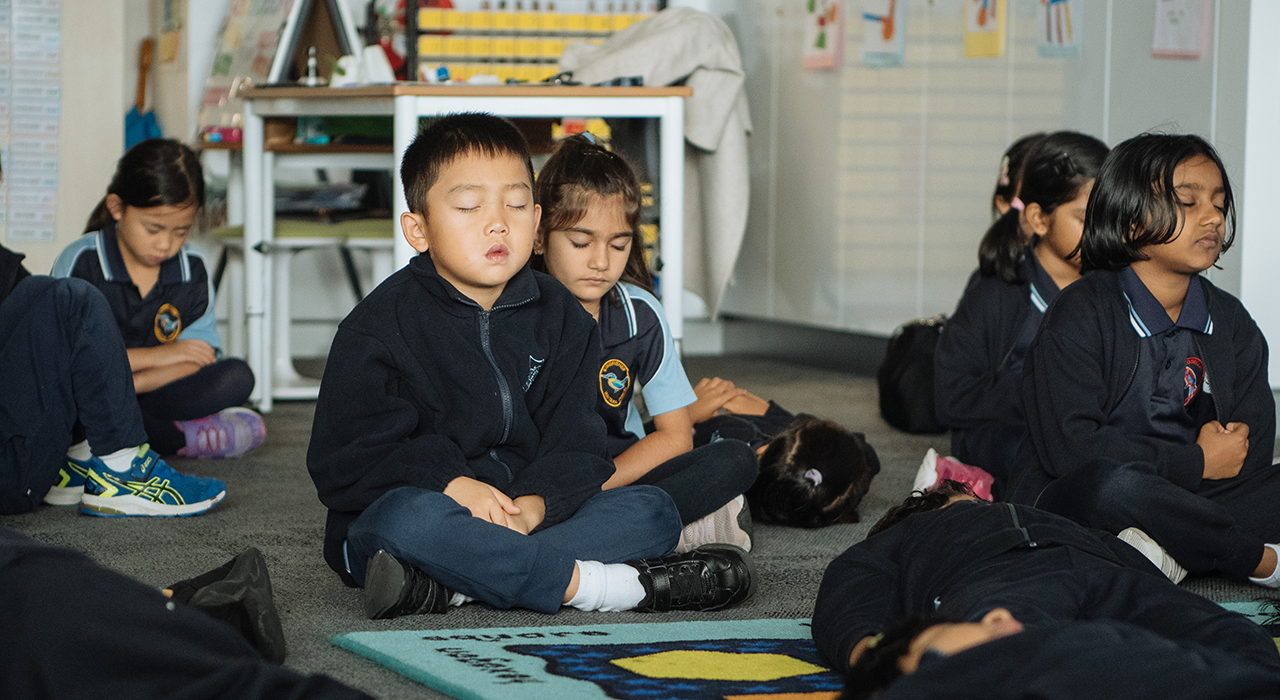Is self-care something you prioritise? Or is it something you view as indulgent or feel you don’t have time for? It can be a difficult lesson for many of us to learn, but to truly be at our best, both for ourselves as well as the people around us, we need to make self-care a priority. Far from indulgent, try to view self-care as a necessity for the pace and pressure that life can place on us all.
So what exactly is self-care? Self-care refers to the activities and practices that support physical, emotional and mental health. Contrary to what some people believe, self-care doesn’t have to be lavish or expensive. It’s often the simplest things that make the biggest difference.
We’ve put together our top tips for developing your own self-care practice (it really is a practice!). Why not try to be proactive and embed some form of self-care into your daily, weekly, monthly and yearly routine? Don’t wait until you’re struggling, start your self-care practice today!
1. Mindful moments
Self-care can be as simple as slowing down and pausing multiple times during the day. You might do this by simply taking three long, slow deep breaths or by consciously engaging your senses for a few moments. Doing this can be surprisingly powerful as it can help you to ‘reset’ during even the busiest of days. The hardest thing is remembering to do it.
Try it now! Take three deep breaths and notice the feeling of your breath in your body as you breathe. What physical sensations do you notice? The gentle rise and fall of your chest and belly? The sound of your breath? The feeling of air in your nostrils? Now take a moment to look around you. Take note of what you see, what you can hear, the contact your body is making with the chair you’re sitting on, with your clothes.

It really is amazing what taking a few moments to slow down and be present can do for the rest of your day. As Zen master Thich Nhat Hanh says “Smile, breathe and go slowly”.
2. Self-soothe
When you feel sad, anxious, stressed or overwhelmed pause and practise RAIN, which encourages you to turn towards your experience with care and kindness. Try it by:
Recognising what’s going on. Consciously acknowledge the thoughts, emotions and behaviours that are affecting you.
Allowing the experience to be there, just as it is, without trying to fix or avoid it.
Investigating what’s going on, with interest and care. You might ask yourself “what is going on in my body right now?”, “What wants my attention right now?”, “What am I believing right now?”
Nurturing yourself. You might ask yourself “what do I most need right now?”. Try to offer yourself the same care and kindness you would offer a friend. As you do this also consider offering yourself some form of soothing touch. You might place one hand over your heart, give yourself a hug or gently give one hand a squeeze.
3. Move your body
Have you ever noticed that how you feel impacts the way you move? For example, when we feel tired and sad our bodies tend to feel heavy and move more slowly; when we feel anxious we tend to either rush around or feel unable to move at all. This connection between how we feel and how we move goes in both directions, which means that we can use movement to influence how we feel.
Exercise can help with anxiety by reducing the activity of the the ‘fight or flight’ response in the body. People who experience anxiety can fear or resist the physiological changes associated with anxiety such as rapid heartbeat and shortness of breath. Regular exercise can help to develop a tolerance for these sensations and it’s also a great way to boost mood.

While you might build regular movement into your self-care practice through traditional forms of exercise, such as walking, running, swimming, cycling or going to the gym, there are lots of other ways to move your body. You might consider a regular dance class, joining a hiking group or exploring a gentler form of movement such as yoga, tai chi or qigong. See if you can tune into your body and really listen to what it needs.
4. Make time for rest
Take a moment to consider the extent to which you truly allow yourself to rest. We live in a culture that overvalues busyness and often views rest as unproductive or lazy. However, we believe that we need to intentionally build rest into our lives more than ever before. Rest gives us the opportunity to slow down, calm our overactive nervous systems, and reconnect to the things and people that are most important to us. When we’re well rested we’re better able to think clearly and flexibly, we’re more responsive and better able to access our intuition and creativity.
Try considering how you might build intentional rest into your self-care practice. Here are a few suggestions to get you started:
- Sleep-ins
- Time in nature
- Reading in bed
- Meditation
- Soaking in a hot bath
- Listening to music
- Massages
- Time alone
- A gentle yoga class
- A night in
- Journalling
- A face-mask in front of a rom-com!
- Creating a relaxing pre-sleep routine
- Cuddles with a pet
.jpg?width=4150&name=eric-ward-610868-unsplash%20(1).jpg)
5. Communicate your needs
Reach out and communicate to others what you need. It can be tempting to think that we shouldn’t need to communicate our needs, that the people who care about us should already know what we need. However, unless we clearly communicate what it is we need, we can’t assume that people can read our minds!
Reflecting on what your needs are and communicating them is a really important part of self-care. If asserting your needs to others is something you struggle with, you’re by no means alone.
It’s important to make time to regularly check in with yourself, and figure out what your needs are - especially during times of stress or overwhelm. It may be that you need:
- A hug
- Time in the company of someone who cares about you
- Time alone
- Someone to listen without necessarily giving advice
- Practical support
Maybe you’re wanting to make a big life change and are needing support of various kinds. Perhaps you need support from a psychologist, or, if you already see one, perhaps you might decide to include a regular check-in as part of your self-care practice.
6. Get creative
Being creative is a wonderful way to practise self-care. Creativity comes in all shapes and sizes, it doesn’t necessarily mean being artistic, musical or crafty in the way that we often think it has to.
Try to think of creativity as trying new things; perceiving the world in new ways; being open to new perspectives and new experiences. Here are a couple of ways of being creative that you may not have considered:
- Trying a new recipe, a new hobby or a new form of movement (e.g. dance, hiking)
- Discover and listen to new music
- Discover and read a new author
- Take a different route to work or school (or somewhere you go regularly) - whether on foot, bicycle or car
- Try mindful colouring, watercolour or create your own mandala
- Take a theme based photo everyday for a month (e.g. trees; shadows; animals; textures; food)
- Appreciate the creativity of others - go to an art exhibition, theatre production or live music gig.
![]()
Ready to start practising self-care?
Self-care can be as simple as slowing down and pausing to check in with yourself. Why not try integrating a meditation self-care check in?












.jpg)





